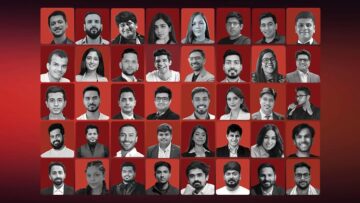Sneaker though a rage today, leather formals are not backing down. Leading companies such as Bata, Red Tape, Lee Cooper, Clarks, Red Chief, Hush Puppies, Woodland, U.S. Polo, Liberty, Centrino, FAUSTO, Bridlen, Ruosh Footwear, Steve Madden, Alberto Torresi, Louis Phillippe, Hidesign, Van Heusen, Metro Brands Limited and more are responding with fresh, stylish designs retaining leather as a timeless and valuable choice.
Celebrities and influencers are also helping to keep leather in the spotlight. Salman Khan, for example, was seen wearing bold black boots made from rare stingray leather by Brune & Bareskin. Zendaya wore sleek leather ankle boots from Christian Louboutin and Dua Lipa often pairs her outfits with classic knee-high leather boots inspired by the 1970s. Stars like Shah Rukh Khan have made leather brogues and boots more popular.
The international leather footwear trends offer a bold mix of practicality and luxury. Leather over-the-knee boots from brands like Chloé and Fendi bring a touch of elegance, complementing both boho and ladylike outfits. Miu Miu’s elevated leather hotel slippers offer a laid-back, chic option for both on-duty and off-duty styles.
Moto boots made of leather are also gaining traction with designs featuring buckles and distressing for a rugged vibe, while others keep it sleek and streamlined. Leather Mary Janes also makes a strong comeback, with fresh updates like hardware accents, glossy finishes and directional shapes.
Geometric designs continue to make an impressive impact. Every season, designers deliver fresh innovations, from hair-thin stilettos to sculpted uppers and cutout vamps. For Fall 2024, this creativity reached new heights with conical-shaped heels taking centre stage. Altuzarra and Chloé introduced leather slingback heels and strappy mules, each tapering neatly into a striking triangle shape, while Prada redefined low kitten heels with angular, architectural designs. These geometric styles add a modern flair while showcasing leather’s timeless versatility in footwear.
Merging Leather Elegance with Sneaker Comfort
The leather footwear industry in India has also improved in quality and functionality, with brands focusing on comfort and durability to keep up with sneaker trends. India’s leather and footwear industry turnover is expected to grow from around US $ 17.3 billion today to US $ 47.1 billion by 2030.

“There’s definitely a renaissance for premium, artisanal leather footwear as our consumers are re-discovering the timeless allure of craftsmanship and classic silhouettes,” said Ankur Rastogi, Head of Collection, Bata India. He added, “There is a resurgence in demand styles like brogues, monk straps and derbies – as also seen on red carpets and in movies. We are seeing a fresh spin on these classics through rich textures, meticulous design details like monogram charms and exciting ombre hues.”
The company, known for brands like Hush Puppies and North Star in India, recently launched a new artisanal leather collection featuring classic laced-up derby shoes, monk strap loafers and brogues, starting at Rs. 2499.
“We also launched Hush Puppies first-ever PartyReady collection featuring premium leather styles of timeless oxfords and loafers. We infused these leather masterpieces with Deep Comfort technology so you can celebrate without compromising on style or comfort. Inspired by our design centres in Italy, we added exciting elements like croco pattern, HP charm and gradient colours,” remarked Ankur.
The footwear and accessories maker recorded a 52.89 per cent rise in net profit to Rs. 51.97 crore (US $ 6 million) in the second quarter, compared to Rs. 33.99 crore (US $ 4 million) in the same period last year while revenue from operations was up by 2.2 per cent to Rs. 837.14 crore (US $ 100 million). Bata India, which sells close to 50 million pairs every year, has over 1,900 and claimed to cater to nearly 250,000 customers daily in 2023.

Highlighting broader trends in men’s footwear, Toshit Dhawan, AVP Sourcing/Business Head, Red Chief Sports, a subsidiary of Leayan Global Pvt. Ltd., with an annual turnover of Rs. 350 crore (US $ 42 million approx.) and an annual production capacity of 1.56 million pairs, noted that comfort is now a top priority. “Flexible soles are in demand, alongside formal and semi-formal styles. Leather preferences lean towards OX NAPA, OIL PULLUP, NDM and SOFTY, which combine durability and style. On the other hand, NUBUCK is seeing less demand,” he said.
For the uninitiated, OX NAPA is a smooth, soft leather that has a polished, luxurious look, while OIL PULLUP is treated with oils and waxes, giving it a rugged, vintage appearance that evolves with use. NDM (Natural Dry Milled) leather has a natural texture, offering a softer and more flexible feel and SOFTY is a very soft, pliable leather with a smooth finish. In contrast, NUBUCK leather, known for its velvet-like surface created by sanding or buffing, has seen lower customer demand compared to these other leather types.
To support its large footwear manufacturing operations, LGPL operates its own tannery, specialising in producing a wide variety of leathers, including Cow, Buffalo and Goat.

The growing popularity of sneakers has significantly impacted the sales of traditional leather footwear, leading brands to rethink their designs and adapt to the evolving preferences of today’s shoppers, according to Puneet Tyagi, VP of Marketing and Online, Egoss Shoes, a New Delhi-based footwear brand operating three brands in footwear including Lafattio (luxury footwear) and Ladyboss by Egoss (women’s footwear). With presence in over 2,000 retail outlets across India, including MBOs like Metro, Mochi, INC.5, Regal and Centro, the brand has an annual turnover of Rs. 125 crore (US $ 126 million).
“Recent design innovations by Egoss feature dual-tone colour schemes, mixed-material compositions and minimalist aesthetics. The materials used include eco-friendly leathers and suedes and the colour palette spans neutral tones like beige, slate gray and olive green, appealing to the modern consumer’s desire for subtle yet stylish footwear,” Puneet stated.
He further said that there’s a trend toward versatile, all-occasion footwear — styles that suit both formal and casual settings, reflecting today’s flexible work culture. In July, Egoss, with an annual turnover of Rs. 125 crore, acquired a new production unit in Agra. Once operational, it will increase manufacturing capacity to nearly 3 million pairs annually, up from 1 million pairs. It now has five manufacturing units based in Agra and Dehradun.

To fend off competition from sneakers, brands combine the sleekness of traditional leather with the functionality and comfort associated with sneakers. Kuldeep Singh, Founder and CEO, San frissco, emphasises the continuing appeal of classic styles such as Oxfords and Derbies, while noting a shift towards more casual and versatile designs like loafers and leather sneakers. For women, textured mid-top boots are trending. In terms of materials, faux leather and premium Italian leather are becoming more popular due to their combination of durability, comfort and style. Customers are also increasingly seeking footwear with cushioned insoles and lightweight soles for all-day comfort.
“We have introduced several hybrid designs like leather sneakers and our Jet-setter Lace-Up Boots. Our coloured leather shoes, including options like the Godfather Tan Boots, also add variety to our collection and have been particularly popular in festive seasons and casual settings,” reiterated Kuldeep, adding that San frissco also offers bespoke options for select designs, allowing customers to choose specific materials, colours and finishes.
The homegrown men’s footwear brand has an annual turnover of Rs. 60 crore (US $ 12 million) and is targeting Rs. 100 crore in revenue next year.

Charru Sharma, Founder, House of Vitti, an emerging brand making traditional footwear for women by blending heritage with modern design, highlighted that crystal work is taking centre stage in both subtle and bold styles. For women’s footwear, crystal-embellished designs range from minimal accents on classic silhouettes to fully adorned, statement pieces that create a high-glam look. Men’s leather shoes, especially formal styles, are also beginning to feature subtle crystal detailing for a refined, modern edge.
“Alongside crystals, metallic embellishments like beads, small studs and brass accents are making waves. These elements add dimension and sparkle, creating a balance between elegance and boldness, especially in heels and mules,” she added.
Pricing Strategy, Sustainability Key to Attracting Consumers
Leather footwear tends to be priced higher than most mass-produced sneakers due to the materials and craftsmanship involved. “However, we aim to offer luxury at an affordable price point, ensuring that our customers get the best value for their money. For instance, our handcrafted leather shoes start at around Rs. 3,295, offering an accessible luxury experience without compromising on quality,” remarked Kuldeep.
Whereas, Puneet noted that while traditional leather shoes are often seen as premium products, the rise of affordable sneakers and formal shoes has prompted Egoss to revaluate its pricing strategy. The brand aims to strike a “balance between maintaining high standards of quality and offering competitive prices that attract budget-conscious consumers.”
Brands are also embracing sustainability as a major crowd-puller, attracting Gen Z and millennials with their eco-friendly innovations. For example, Red Chief targets consumers aged 35-60, with a strong following across urban and semi-urban areas. Bata India’s recent campaign opted for influencers over celebrities to strike a chord with a younger demographic. With India’s millennial population at 34 per cent and Gen Z growing rapidly, these two groups are expected to make up half of India’s population by 2030. San frissco is targeting customers aged 25-45 who value both style and durability, while House of Vitti attracts women aged 25-34.
Similarly, Egoss, a luxury fashion footwear brand is expanding into Tier-3 markets, focusing on digitally savvy Millennials and Gen Z aged 18-35. The brand is also exploring the use of innovative materials such as eco-friendly leather alternatives like microfabrics, organic cotton and sustainable fabrics for linings and recycled rubber and bio-based soles into their collections.
Egoss is currently transitioning to non-toxic, water-based adhesives. This transition is actively underway, with certain product lines now fully using these adhesives. The goal is to have all product lines using water-based adhesives within two years, supporting both product safety and environmental health.
“We also use recycled corrugated paper-based packaging and natural dyes for printing. The packaging boxes are 20 per cent more expensive but are slightly stronger and longer lasting, reducing costs of changing damaged boxes,” said Puneet.
Meanwhile, Bata claims to be the first organisation in India to receive the BIS Hawai certification. Moreover, Bata Group is actively developing a comprehensive product sustainability matrix to define and assess the eco-friendliness of the products. This matrix guides and monitors the use of materials and processes with eco-friendly characteristics in shoe manufacturing from 2024 onwards.
The company also became a member of Leather Working Group (LWG) – a group of brands, retailers, product manufacturers, leather manufacturers, chemical suppliers and technical experts that have worked together to develop an environmental stewardship protocol specifically for the leather manufacturing industry.
House of Vitti focuses on using fabrics that can be repurposed in future designs, aiming to minimise waste while maximising the longevity of materials. It also finds creative ways to incorporate unused fabrics, such as integrating them into new collections or creating smaller accessories, which helps to reduce discard.
Brands are also increasingly leveraging technology to stay ahead. Leayan Global Private Limited, for instance, has a dedicated R&D department equipped with physical and chemical labs to conduct quality tests on chemicals, leather and footwear. The company also uses advanced CAD and CAM software to develop innovative offerings, including snake-print and crocodile-print leather. Egoss uses 3D printing to create highly accurate prototypes and custom moulds.
Experts said that in the fiercely competitive footwear industry, the key to survival and success is clear: constant evolution.
Leather Shoes: A Big Opportunity for Exports!
|








